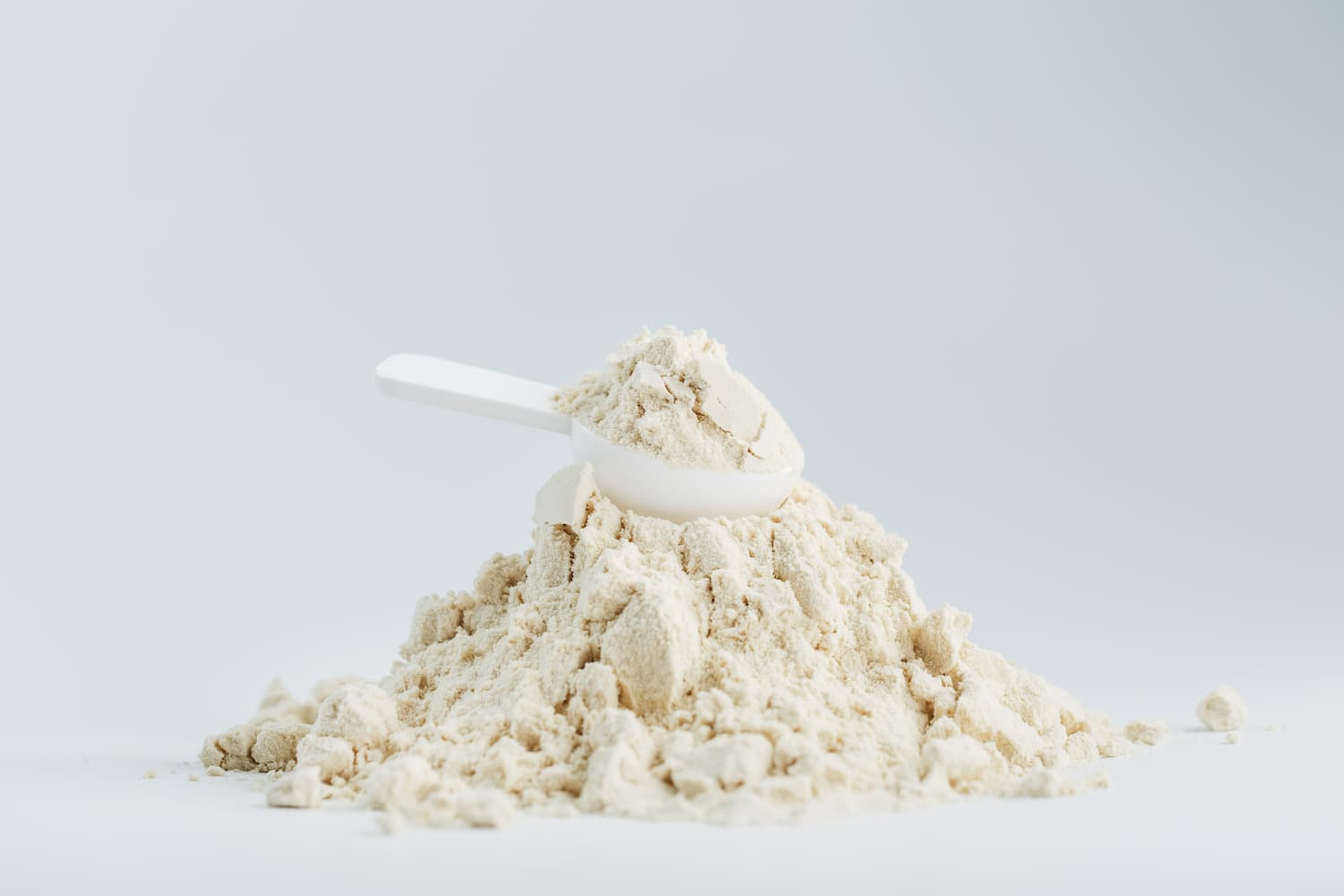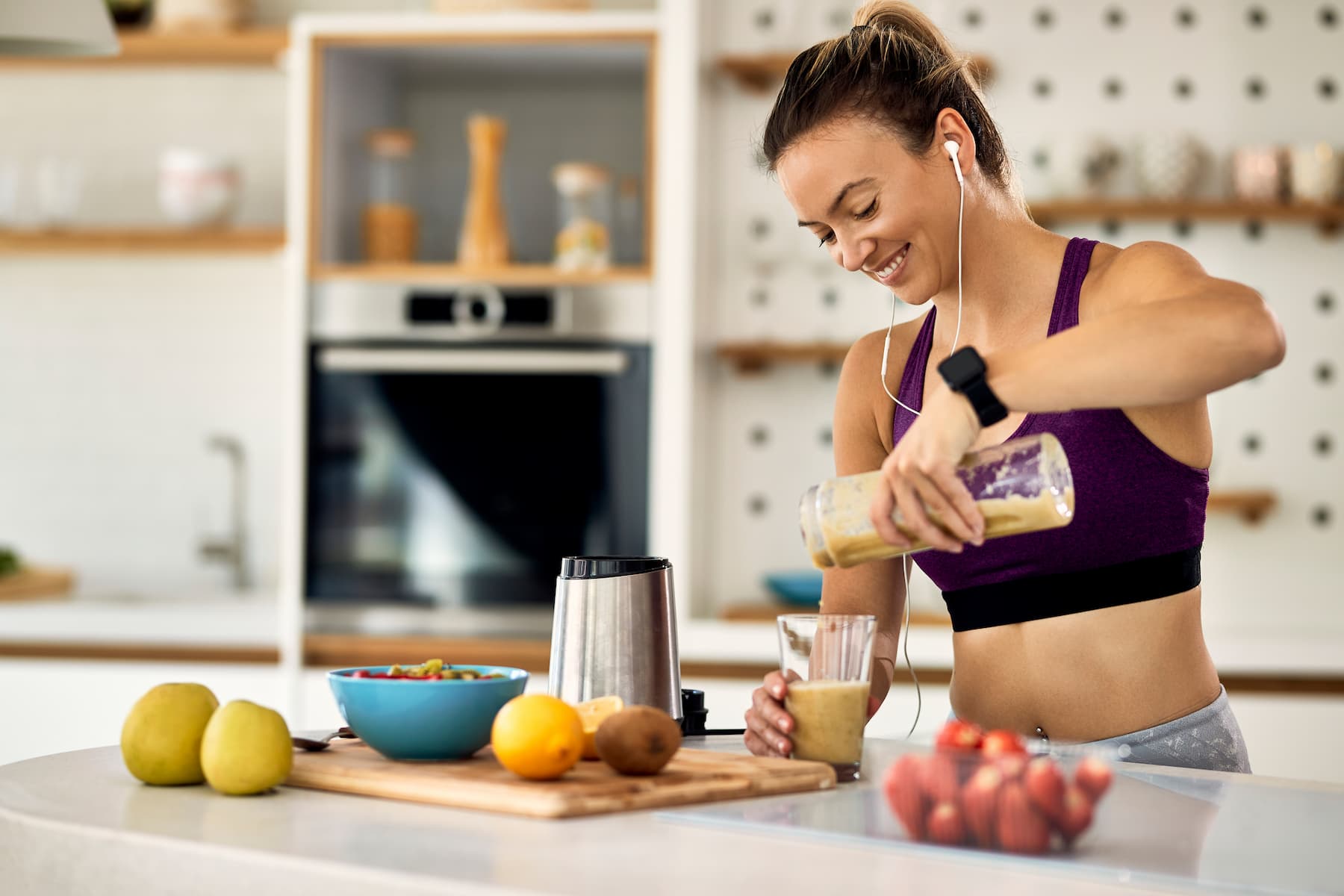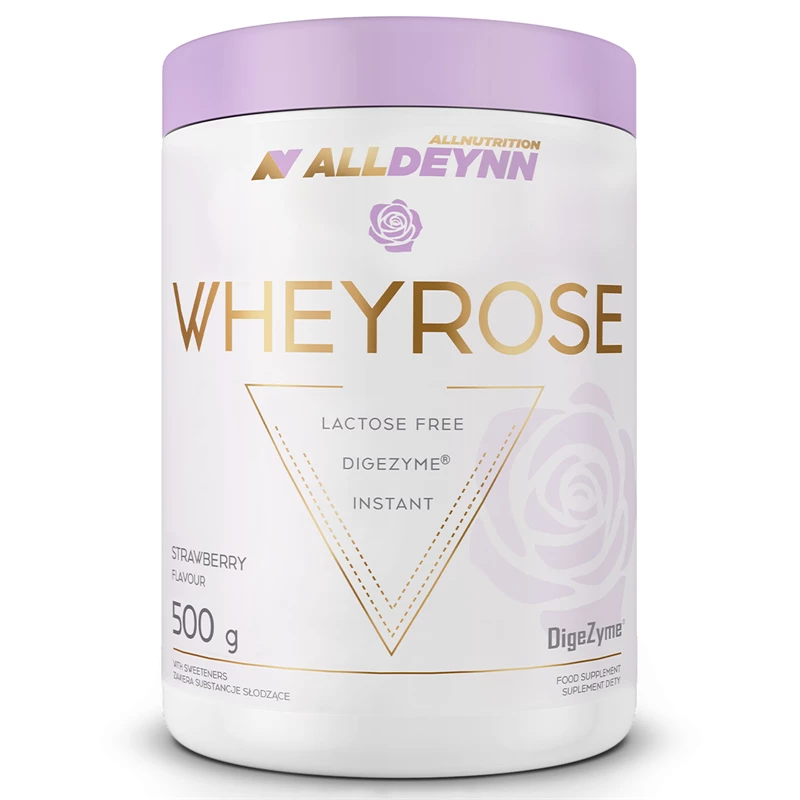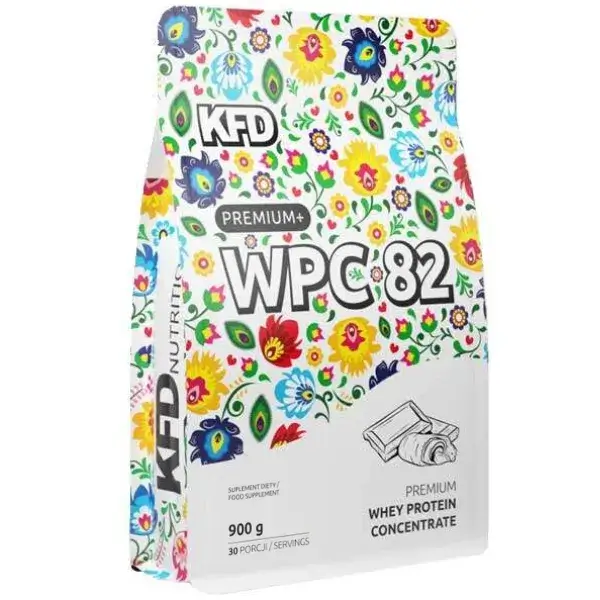Plant protein - what it is, sources, properties + vege nutrients
Plant-based protein sources can effectively replenish valuable proteins in your body.


Learn more about our editorial process
.

Learn more about our editorial process
.

Learn more about our editorial process
.

Learn more about our editorial process
.
Why you can trust us
Articles on Natu.Care are written based on scientific research, data from government websites and other reliable sources. The texts are written in cooperation with doctors, nutritionists and other health and beauty experts. Articles are reviewed before publication and during significant updates.
.Learn more about our editorial process
.Information about advertisements
Content on Natu.Care may contain links to products from the sale of which we may receive a commission. When creating content, we adhere to high editorial standards and take care to be objective about the products discussed. The presence of affiliate links is not dictated by our partners, and we select the products we review ourselves completely independently.
.Learn more about our terms and Conditions
.Vegetable sources of protein are a cool alternative, not just if you're vege or sexy-flexi. It's also a serving of fibre, phytonutrients and other nutrients. On the other hand, it is, after all, the protein from meat that is better digested, assimilated and provides you with valuable iron... How to live?
I will tell you together with nutritionist Kuba Pągowski about how to properly balance a plant-based diet and effectively provide yourself with vege-style protein.
From this article you will learn:
.- What is plant protein. .
- What are the best sources of plant protein. .
- What are the advantages and disadvantages.
- What are the best sources of plant protein?
- How to compose meals on a plant-based diet. .
See also:
.
- Amino acids
- Whey protein isolate (WPI) .
- Whey protein concentrate (WPC) .
- Whey protein hydrolysate (WPH)
- Protein nutrient
- How much protein a day?
- Creatine
- Casein
- Creatine
- BCAA
- Citrulline
Plant protein - what is it?
.
Vegetable protein is protein derived from a variety of plants, such as legumes (e.g. beans, lentils, chickpeas), nuts, seeds, cereals, cereals, soya, and leafy vegetables. It consists of the same amino acids as animal proteins. However, plant products digest less well and contain fewer essential amino acids, which must be supplied to the body from the dietand.
An appropriately composed plant-based meal can be part of a balanced diet, especially for vegans and vegetarians, and can effectively cover daily protein requirements..
 .
.
Kuba Pągowski clinical dietitian
.
Complete and incomplete proteins
.
Complete and non-complete proteins determine the content of essential amino acids in the foodand.
.
|
Complete proteins . |
Incomplete proteins . |
|
|
Also known as complete proteins, they contain all nine essential amino acids that the body is unable to synthesise on its own and must receive from food. Proteins are also known as complete proteins. Complete proteins mainly come from animal products such as meat, fish, eggs, milk and milk products. |
Also known as incomplete proteins, they contain some, but not all* of the essential amino acids. |
.
These proteins are mainly derived from plant-based products such as white beans, lentils, nuts, seeds, spinach and green vegetables, cereals (oats, maize, rye). |
*The exception is soya, which has a rich aminogram.
Vegetable proteins are considered non-complete proteins because the vast majority of plant sources do not contain all essential amino acidsand.
There are exceptions also among animal products, e.g. gelatine, which is also considered an incomplete protein because it lacks certain amino acids..
 .
.
Kuba Pągowskiclinical dietitian
Plant protein bioavailability
.
Vegetable protein is less digestible than animal proteinand. According to various scientific studies, the bioavailability of plant proteins compared to those of animal origin is 10%-40% lower. This is because plant proteins contain a lot of dietary fibre and phytic acid, which hinder the absorption of proteins .
Protein under the magnifying glass
.An in vitro study from 2022 showed that slightly more protein can be obtained from meat than from plant-based alternatives. Cooked pieces of plant products and chicken meat were 'broken down' using an enzyme that the body naturally uses to digest food. The digestibility of the chicken protein after 2 hours was 33% higher than the plant protein, but after 4 hours the difference had decreased to 21%and.
Plant protein - pros and cons
.
If you want to cut down on protein from zoonotic products, keep in mind not only the benefits but also the weaknesses of this way of eating. What are the strengths and weaknesses of plant proteinand?
Benefits
.
- High fibre content. Fibre contributes to a healthy digestive system, blood sugar regulation, maintaining a healthy body weight and improving intestinal peristalsis.
- Rich in healthy fats. Plant protein is typically low in fat and contains essential fatty acids (known as healthy fats), such as omega-3 acids. .
- Low in saturated fat. Vegetable protein contains less saturated fat compared to animal protein. This may contribute to, among other things, a reduction in the risk of cardiovascular disease.
- High content of phytonutrients. These are biologically active compounds produced by plants. Their consumption can support immunity, act antioxidant and improve digestive function.
- A wealth of nutrients. Plant protein often contains valuable vitamins (e.g. B vitamins, vitamin C) and minerals (e.g. calcium, magnesium, potassium).
- Recommended for allergy sufferers. Plant protein is a great alternative if you have an allergy or intolerance to dairy. .
- Environmental benefits.Plant protein production tends to have a lower environmental impact compared to zoonotic protein production, which can help reduce greenhouse gas emissions and protect the environment.
- Easier digestion. Plant protein digests more easily than dairy, which is important for people who have difficulty digesting dairy proteins such as casein and whey.
Some plant-based protein products (e.g. vegan sausages, plant-based gyros or plant-based cheeses) are highly processed. They contain a lot of sodium and preservatives, which should be limited in most people..
 .
.
Kuba Pągowski clinical dietitian
.
Disadvantages
.
- Incomplete protein. Apart from soya, plant protein sources do not provide the body with all the essential amino acids. So you have to combine different sources of plant protein.
- Worse digestibility. Plant protein is absorbed less well than zoonotic proteins.
- Does not provide vitamin B12 and iron. People on a plant-based diet are at risk of vitamin B12 deficiency and iron deficiency, as their best sources are meat.
- Not for low-carb. Some plant proteins are high in carbohydrates, which is not ideal for those on a low-carbohydrate diet.
- Not suitable for food sensitivities. People with irritable bowel syndrome (IBS) need to be cautious due to the higher fibre content of many plant-based products, which can exacerbate unpleasant symptoms.
- Not for allergy sufferers; People with allergies to soya or nuts (two of the eight most common food allergensand) need to choose the products on their menus more carefully.
Is plant protein inferior?
.
No, it is not.
.
Problem: Plant protein, like animal protein, is made up of amino acids. The catch is that their proportions are disturbed due to the presence of so-called limiting amino acids in plant protein sourcesand.
A limiting amino acid is an essential (indispensable) amino acid that limits the absorption and utilisation of protein taken in with food..
 .
.
Kuba Pągowski clinical dietitian
Solution: In a vege diet, it is crucial proper combination of plant protein sources to obtain complete the essential amino acids that must be supplied to the body from food.
Solution.
The correct combination of plant proteins allows for the correct process of body protein synthesis. A complete protein supplied with food should contain all the essential amino acids, which include cysteine, phenylalanine, isoleucine, leucine, lysine, methionine, threonine, tryptophan, tyrosine, valine.
The body's protein synthesis process must be correct.
Summary
.Don't cross out plant protein just because it is incomplete (I know how that sounds). A combination of different plant proteins in the right amount can provide you with a complete profile of essential amino acids. Later in this article, we will explain how to do this in a clever and tasty way.
ALLDEYNN WHEYROSE
Product description
Protein supplement containing whey protein concentrate (WPC) with added digestive enzymesós. It digests well, is an easy and quick way to provide protein and can be consumed by people with lactose intolerance. It will work well not only as a stand-alone drinkóy but also as a tasty addition to shakesóy, dessertsóy, oatmeal or omeletóy.
WHEYROSE contains five digestive enzymes that help break down macromolecules into smaller components, so that the ingredients from food and the nutrient are absorbed even better. This minimises or even eliminates digestive discomfort. Such an addition is rare in protein supplements.
.Pros and cons
Protein supplement containing whey protein concentrate (WPC) with added digestive enzymesós. It digests well, is an easy and quick way to provide protein and can be consumed by people with lactose intolerance. It will work well not only as a stand-alone drinkóy but also as a tasty addition to shakesóy, dessertsóy, oatmeal or omeletóy.
WHEYROSE contains five digestive enzymes that help break down macromolecules into smaller components, so that the ingredients from food and the nutrient are absorbed even better. This minimises or even eliminates digestive discomfort. Such an addition is rare in protein supplements.
.Additional information
Protein supplement containing whey protein concentrate (WPC) with added digestive enzymesós. It digests well, is an easy and quick way to provide protein and can be consumed by people with lactose intolerance. It will work well not only as a stand-alone drinkóy but also as a tasty addition to shakesóy, dessertsóy, oatmeal or omeletóy.
WHEYROSE contains five digestive enzymes that help break down macromolecules into smaller components, so that the ingredients from food and the nutrient are absorbed even better. This minimises or even eliminates digestive discomfort. Such an addition is rare in protein supplements.
.User review
Protein supplement containing whey protein concentrate (WPC) with added digestive enzymesós. It digests well, is an easy and quick way to provide protein and can be consumed by people with lactose intolerance. It will work well not only as a stand-alone drinkóy but also as a tasty addition to shakesóy, dessertsóy, oatmeal or omeletóy.
WHEYROSE contains five digestive enzymes that help break down macromolecules into smaller components, so that the ingredients from food and the nutrient are absorbed even better. This minimises or even eliminates digestive discomfort. Such an addition is rare in protein supplements.
.ALLDEYNN VEGEROSE
Product description
A protein supplement made from five plant proteins enriched with acacia fibre, flaxseed, MCT oil and the probiotic-prebiotic complex LactoWise®. It is a synbiotic thatós stimulates the developmentóy and growth of beneficial bacteria in the gastrointestinal tract and shows a beneficial effect on the condition of the digestive system.
Pros and cons
A protein supplement made from five plant proteins enriched with acacia fibre, flaxseed, MCT oil and the probiotic-prebiotic complex LactoWise®. It is a synbiotic thatós stimulates the developmentóy and growth of beneficial bacteria in the gastrointestinal tract and shows a beneficial effect on the condition of the digestive system.
Additional information
A protein supplement made from five plant proteins enriched with acacia fibre, flaxseed, MCT oil and the probiotic-prebiotic complex LactoWise®. It is a synbiotic thatós stimulates the developmentóy and growth of beneficial bacteria in the gastrointestinal tract and shows a beneficial effect on the condition of the digestive system.
Expert opinion
A protein supplement made from five plant proteins enriched with acacia fibre, flaxseed, MCT oil and the probiotic-prebiotic complex LactoWise®. It is a synbiotic thatós stimulates the developmentóy and growth of beneficial bacteria in the gastrointestinal tract and shows a beneficial effect on the condition of the digestive system.
ALLDEYNN VEGEROSE
Product description
A protein supplement made from five plant proteins enriched with acacia fibre, flaxseed, MCT oil and the probiotic-prebiotic complex LactoWise®. It is a synbiotic thatós stimulates the developmentóy and growth of beneficial bacteria in the gastrointestinal tract and shows a beneficial effect on the condition of the digestive system.
Pros and cons
A protein supplement made from five plant proteins enriched with acacia fibre, flaxseed, MCT oil and the probiotic-prebiotic complex LactoWise®. It is a synbiotic thatós stimulates the developmentóy and growth of beneficial bacteria in the gastrointestinal tract and shows a beneficial effect on the condition of the digestive system.
Additional information
A protein supplement made from five plant proteins enriched with acacia fibre, flaxseed, MCT oil and the probiotic-prebiotic complex LactoWise®. It is a synbiotic thatós stimulates the developmentóy and growth of beneficial bacteria in the gastrointestinal tract and shows a beneficial effect on the condition of the digestive system.
Expert opinion
A protein supplement made from five plant proteins enriched with acacia fibre, flaxseed, MCT oil and the probiotic-prebiotic complex LactoWise®. It is a synbiotic thatós stimulates the developmentóy and growth of beneficial bacteria in the gastrointestinal tract and shows a beneficial effect on the condition of the digestive system.
Vegetable protein - the best sources [table]
.
You already know that plant proteins can do, you just need to know how to compose. So what to choose from? Check out the best vege protein sourcesand.
Cereals
. .
|
Product . |
Number of proteins per 100 g . |
How much do I need to eat to provide 20 g of protein . |
|
Whole-grain pasta . |
15 g |
130 g |
|
Seitan (wheat gluten) . |
15 g |
130 g |
|
Rice quinoa |
14 g |
130 g |
|
Oatmeal |
13 g |
150 g |
|
Couscous groats |
13 g |
150 g |
|
Wheat groats |
12 g |
140 g |
|
Buckwheat groats |
11 g |
175 g |
|
Bunch groats |
11 g |
175 g |
legume seeds
. .
|
Product . |
Number of proteins per 100 g . |
How much do I need to eat to provide 20 g of protein . |
|
Beans |
26 g |
80 g |
|
Red lentils |
24 g |
85 g |
|
White beans |
21 g |
95 g |
|
Groot |
24 g |
85 g |
|
Chickpeas |
19 g |
105 g |
Soy and its preserves
. .
|
Product . |
Number of proteins per 100 g . |
How much do I need to eat to provide 20 g of protein . |
|
Soy |
37.5 g |
55 g |
|
Tempeh |
19 g |
105 g |
|
Natural tofu |
12 g |
140 g |
|
Miso paste |
12 g |
140 g |
|
Edamame |
11 g |
135 g |
Seeds, seeds, nuts
. .
|
Product . |
Number of proteins per 100 g . |
How much do I need to eat to provide about 20 g of protein? . |
|
Peanuts . |
25 g |
90 g |
|
Sunflower seeds |
21 g |
95 g |
|
Almonds |
24 g |
85 g |
|
Pistachios |
20 g |
90 g |
|
Pumpkin seeds |
19 g |
105 g |
|
Chews |
18 g |
105 g |
|
Sesame |
18 g |
105 g |
|
Walnuts |
15 g |
130 g |
Other plant-based sources of protein
. .
|
Product . |
Number of proteins per 100 g . |
How much do I need to eat to provide about 20 g of protein? . |
|
Pea protein isolate . |
80 g |
25 g |
|
Soy protein isolate |
87 g |
23 g |
|
Spirulina |
57 g |
35 g |
|
Yeast flakes |
45 g |
45 g |
Best digestible plant protein
.
The best-absorbed plant proteins are soy and pea protein isolates, which you will find in protein supplements. Their digestibility is as high as 90% and they contain approximately 80-90 g of protein in 100 g of dry weight. Plant isolates quickly and efficiently provide plant-based protein and fibre.
Which fruits contain the most protein?
.
Fruits do not contain much protein. They are rich in fibre, vitamins, minerals, among other things, but the protein content is low. Examples of fruits that contain protein (per 100 g) are, for example: coconut (4 g), guava fruit (2.5 g), avocado (2 g), dried dates (2 g), raspberries (1.2 g), bananas (1.2 g).
Fruits that contain protein (per 100 g) are not very high in protein.
Vegetable protein - what does it have to do with?
.
Sources of protein in a vegan or vegetarian diet are tasty and readily available. Tofu in an Italian marinade, rye bread with grains with a crispy crust and plant-based spreads... Where to start? To compose a wholesome meal rich in plant-based protein, follow a few tips.
With what to combine plant protein?
.
Nutrition experts recommend that plant proteins should be combined in such a way that the amino acids they contain complement each other. Meals should be prepared according to the principle of protein complementarity. Combine legumes, cereals, nuts, seeds, seeds and vegetables.
How to compose a plant-based, protein-based meal on its own? Combine:
- full-grain cereal + pulses (e.g. brown rice with red lentils, whole-grain pasta with chickpeas and nuts) .
- cereals + nuts or seeds (e.g. oatmeal with nuts, rye roll with sunflower seed paste .
- cereal + dairy products (e.g. muesli with skyr, protein granola with vegan soya yoghurt) .
Dietitian Kuba Pągowski's clients praise his simple and delicious menus, which help to supplement deficiencies, support weight loss or build muscle mass. He shared with me some tried-and-tested recipes rich in plant-based protein.
Plant protein in meals - recipes
.
Express tofu pasta
.
Ingredients for 1 serving:
.
- cherry tomatoes 120 g .
- smoked tofu 90 g .
- wholemeal pasta 70 g .
- hummus classic 30 g .
- spinach 25 g .
- mozzarella light 30 g .
- pepper 1 g .
- salt 1 g .
Making:
- Cook the pasta al dente. .
- In a frying pan, sauté the spinach and chopped tomatoes in a little water.
- Add the spinach and sliced tomatoes.
- Add salt and pepper and wait for the spinach to let the water run. .
- Slice the tofu and add to the pot. Mix it all together with the pasta and hummus.
- Add the tofu to the pot.
- Sprinkle with coarsely grated mozzarella. .
A serving contains: 535 kcal, 28.5 g protein, 20 g fat, 54 g carbohydrate, 11 g fibre
Tofouche
.
Ingredients per 1 serving:
.
- tofu 180 .
- wholemeal rye bread 90 g .
- olive 10 g .
- dark soya sauce 10 g .
- granulated garlic 4 g .
- mayonnaise 4 g .
- tomato 120 g .
- sauerkraut 60 g
- cucumber 60 g .
Making:
- Squeeze the tofu out of the water and place in a bowl.
- Squeeze the tofu out of the water and place in a bowl.
- Add your favourite spices, soy sauce and oil.
- Add the tofu.
- With a fork, break the tofu into small, tiny lumps and mix. .
- Toss into a frying pan and fry for 2-3 minutes on each side to turn golden. Eat with bread and vegetables. .
A serving contains: 555 kcal, 30.7 protein, 25.4 fats, 46.6 carbohydrates, 10g fibre
Tofu sandwiches with peanut sauce
.
Ingredients:
- wholemeal rye bread 90 g .
- tofu 90 g .
- carrots 45 g .
- cucumber 40 g .
- 1.5% milk or vegetable drink 20 g
- peanut butter
- peanut butter 15 g .
- curry 2 g .
Making:
- Cut the tofu crosswise in half and grill in a non-fat pan.
- Prepare the sauce.
- Prepare the sauce: mix a teaspoon of peanut butter with curry spice and a tablespoon of vegetable milk. It is best if you add a teaspoon of curry paste instead of curry powder. .
- Peel the carrot into strips, slice the cucumber or also peel it into strips with a peeler. .
- Smeal a slice with the paste, layer with tofu, top with the sauce, vegetables and cover with a second slice, also sauced. .
A serving contains: 446 kcal, 22 g protein, 16.7 g fat, 46.9 g carbohydrate, 11.6 g fibre
Berry mousse dessert with tofu
.
Ingredients:
- 1.5% milk or vegetable drink 150 g .
- raspberries 100 g .
- smoked tofu 90 g .
- milk groats 30 g .
- flaked almonds 20 g .
- coconut shavings 12 g .
- tahini 12 g .
- WPC nutrient 10 g .
Making:
- Cook and cool the porridge .
- Blend the semolina with tofu, half of the coconut and almond flakes, 100 ml of milk/vegetable drink. You can add sweetener, extract or vanilla flavouring. .
- Place in jars. .
- Make the sauce: mix the tahini with the rest of the flakes, add the sweetener and conditioner, add the vegetable drink to the desired consistency. Pour over the mixture, sprinkle with fruit. .
- Serve the dessert chilled. .
A serving contains: 643 kcal, 31.9 g protein, 36 g fat, 43.2 g carbohydrate, 14 g fibre
Vegan protein supplement
.
For some, tofu is fuuu, and soya is an allergen. And after beans it bloats. Still how.
With help comes plant-based protein nutrition. Vege protein is popular because of the multitude of flavours available and the cool texture. Plus, it provides around 20g of protein per serving. It is made from peas, soya, hemp or rice. A vegan nutritional supplement costs around £7/100g.
.
Interesting study
.
According to a meta-analysis of 31 scientific studies from 2020 plant protein intake is associated with a reduced risk of all-cause mortality and cardiovascular disease mortality compared to diets rich in animal proteinand. These results suggest that a diet consisting of more plant protein compared to animal protein may promote longevity.
Dietitian comments:
Substituting 3% of energy from animal protein with plant protein was inversely associated with overall mortality (risk reduced by 10% in both men and women) and cardiovascular mortality (risk lower by 11% in men and 12% in women)..
 .
.
Kuba Pągowski clinical dietitian
"The overall lower mortality can be attributed primarily to the substitution of vegetable protein for egg white - 24% lower risk in men and 21% lower risk in women, and red meat protein - 13% lower risk in men and 15% lower risk in women," adds the nutritionist.
See also: Protein before or after a workout?
Why is protein important in the body?
.
Protein is the basic building block of the body and is included in every cell of your body. Protein accounts for up to 20% of human weight. Protein is what muscles, hormones, lymph, enzymes, immune system components and transport cells are made ofand.
In addition to their building function, proteins perform other important tasks :
.
- are needed for tissue growth and repair, .
- As enzymes, they are involved in many processes in the body (e.g. digestion, energy production, blood clotting), .
- as hormones, which are transmitters, promote communication between cells, tissues and organs, .
- they have a transport function (e.g. carry nutrients), .
- form antibodies responsible for defending the body against microorganisms, .
- participate in maintaining the body's acid-base balance, .
- provide energy, .
Does plant protein build muscle?
.
Yes, plant protein builds muscle. However, some plant protein sources are poorer in amino acids (e.g. key muscle leucine), so it is important to consume a variety of sources to provide complete amino acids and a balanced set of nutrients.
If we ask the old-timers at the gym if it's possible to build muscle mass on a plant-based diet, or on soy protein, we'll probably be... laughed at. But the facts are that a properly balanced plant-based diet (just like any other) will allow you to build muscle mass optimally..
 .
.
Kuba Pągowski clinical dietitian
Vegetarians vs. carnivores
A 2023 study tested whether a vegan diet containing protein from non-animal products can promote muscle growth and repair as effectively as a diet containing animal protein during strength training.
The study involved young and healthy adults divided into two groups, one of which consumed a high-protein animal diet and the other a high-protein non-animal diet.
The results showed that both groups gained a similar amount of muscle mass and strengthand.
I know from experience that if you want to build muscle mass while on a plant-based diet, you need two things: nutritional awareness of where to find protein and at least basic cooking skills..
 .
.
Kuba Pągowski clinical dietitian
"You fry the chicken, eat it and it's a reasonably tasty meal. With tofu, for example, most people will need to know how to season it to pull out the full flavour," adds the nutritionist.
It won't grow on its own
.Remember - in order for muscles to grow, a kilocalorie surplus in the diet and sufficiently hard strength training are also important. Muscle does not grow from protein consumption alone.
Will plant-based proteins cover your daily requirements?"
.
Of course - plant-based protein sources can cover your daily protein requirements. You already know the best plant-based foods, you know how to compose them - now just work out how much protein you need.
The best plant-based proteins are the ones you need.
How much protein you should consume depends on a number of factors such as age, gender, physical activity and health status. The average normal-weight adult should consume around 0.8-1g of protein per kilogram of body weight, and people who train around 1.8-2.2g of protein per kilogram of body weightand.
A 1 g of protein per kg of body weight for a "typical Smith" is an adequate supply. However, vegans, due to the fact that they derive protein only from plant products, should take in 1.2-1.4 g of protein per kg of body weight. Such a 'surplus' should cover any non-complementary amino acid losses..
 .
.
Kuba Pągowskiclinical dietitian
.
Plant protein versus animal protein
. . .
Some plant sources of protein contain lower amounts of certain essential amino acids.
|
Trait . |
Vegetable protein . |
Animal protein . |
|
|
Full amino acids . |
Some plant sources of protein contain lower amounts of certain essential amino acids. |
Animal proteins, such as meat, fish and eggs, are complete and provide all the essential amino acids needed by the body. |
Animal proteins, such as meat, fish and eggs, are complete and provide all the essential amino acids needed by the body. |
|
Biological value |
Less efficiently assimilated by the body compared to animal proteins. |
Higher biological value, animal proteins are well absorbed and utilised by the body. |
Higher biological value, animal proteins are well absorbed and utilised by the body. |
|
Usability |
80-90% |
90-95% |
|
|
Iron content |
Contains non-haem iron, which is less well absorbed than the haem iron in animal products. |
Animal products, such as meat, are a rich source of haem iron, which is readily absorbed by the body. |
|
|
Fibre content . |
Rich in fibre, which has a positive effect on, among other things, digestion and intestinal health. |
High in fibre, which has a positive effect on, among other things, digestion and intestinal health. |
Typically do not contain fibre. |
|
Fats and saturated fatty acids . |
Vegetable sources usually contain small amounts of saturated fatty acids. |
May contain higher amounts of fat, including saturated fatty acids. |
|
|
Potential allergens . |
Nuts, soya . |
Protein |
|
|
Potential shortages |
Iron, vitamin B12, calcium, zinc, iodine |
Fibre |
|
|
Satiety |
High satiety . |
High satiety. High satiety. |
Soy kills masculinity?
.
You may have heard that "soy lowers testosterone levels". This misinformation has caused concern among babies who have tasted the creamy vegetable protein and seen their testosterone plummet just from hearing this myth.
The damaging information is straightened out by an expert:
According to scientific research, soy will not destroy your male hormones and will not make you a woman. It gets even better - soy can help you fight for better health because it contains soy isoflavones, which are beneficial to the body and which, paradoxically, can reduce the risk of prostate cancer.
 .
.
Kuba Pągowski clinical dietitian
"Soy isoflavones have effects including lowering systolic blood pressure, regulating blood sugar levels and reducing the risk of many cancers," adds the nutritionist.
Remember the golden rule, just as you need to do a warm-up before your workout, you need to verify the sources of some of the information.
Plant protein in a vegan diet
.
Vegans give up eating animal products completely. Because of this, they are more prone to deficiencies in, among other things, iron. You can cut into spinach like Papaya, but unfortunately non-haem iron (i.e. that found in plants) is less well absorbed by the bodyand.
Vegans need to multiply the recommended daily allowance (RDA) for iron x 1.8 to know how much of this mineral they need to consume daily. A well-balanced plant-based diet will quietly meet iron requirements, but nutritional awareness is key here..
 .
.
Kuba Pągowskiclinical dietitian
"In my opinion, vegans should pay special attention to their calcium supply (choosing fortified plant-based drinks, for example), iron (demand increases) and, of course, protein. These individuals need to prioritise nutritional education so that they don't get 'stuffed' and provide their bodies with all the necessary ingredients," adds the nutritionist.
Plant protein in a vegetarian diet
.
Vegetarians are not as eliminationist in their intake of products and this gives them a certain 'advantage' over vegans regarding exposure to deficiencies.
Vegetarians are much less likely to be deficient in iron, calcium, vitamin B12, due to their consumption of zoonotic sources of these components e.g. dairy, eggs, milk..
 .
.
Kuba Pągowski clinical dietitian
.
However, going deeper - just as vegans and vegetarians are not 'equal'... so too is a vegetarian unequal to a vegetarian. We have different taste tastes and, despite everything, we may not be supplying ourselves with valuable ingredients.
That is why it is important to be nutritionally aware and to compose your meals accordingly. Your requirements will be covered and, of course, the most important thing - your muscles will grow.
Therefore, it is important to be aware of your nutrition and to compose your meals accordingly.
Summary
.
- Plant protein is protein derived from plant products.
- Plant protein is protein derived from plant products.
- Vegetable protein is incomplete because its sources do not contain the full set of amino acids. .
- A properly composed meal based on plant products can effectively provide the body with protein. .
- The best sources of plant-based protein are soya, peas, lentils, chickpeas, beans, broad beans, as well as plant-based protein supplements such as soya protein isolate.
- The best sources of plant-based protein are soya, peas, lentils, chickpeas, beans and broad beans.
- On a plant-based diet you can effectively build muscle mass. .
- Products with plant protein are often a rich source of fibre, phytonutrients, vitamins and minerals. .
FAQ
What does plant protein give you?
.Plant protein gives the body energy, is an important building block for cells and is involved in many processes that are key to the functioning of the body. Thanks to its content of fibre, phytonutrients and other valuable compounds, plant protein supports the digestive system, lowers LDL cholesterol, blood pressure and influences blood glucose levels.
What is the most plant protein in?
.Most plant protein is in vegan protein supplements (80-90% protein per 100 g) and in cereals, legumes, foods made from soy (e.g. tofu, tempeh and nuts (especially peanuts).
What is better animal protein or plant protein?
.Vegetable and zoonotic sources of protein are important and provide protein, but it animal protein has several advantages - it is better absorbed and contains all nine essential amino acids. However, it is worth providing protein from both plant and animal products.
What kind of plant protein to choose?
.The best choice of plant protein is from pulses such as soya, peas, lentils, beans, broad beans or chickpeas, which contain an average of 20g of protein per 100g. These plant sources also contain valuable fibre, phytonutrients, vitamins and minerals.
Alternatively, there are also vegan protein supplements - of these, it is best to choose those from tried and tested manufacturers, without unnecessary additives (colourings, flavourings) and sweetened with natural substances.
What are the best sources of protein in a vegan diet?
.The best sources of protein in a vegan diet are pulses, e.g. peas, lentils, red beans or broad beans (average 20 g protein per 100 g) and products made from soya (contains 37.5 g protein per 100 g), e.g. tempeh, tofu. It is also worth using vegan protein supplements.
.What foods do we classify as incomplete foods?
.Foods categorised as incomplete are mainly plant-based - cereals, legumes, nuts, seeds, pips and sprouts. They are incomplete (incomplete) because they do not contain all the essential amino acids that should be provided from food.
.
Sources
.See all
.Berrazaga, I., Micard, V., Gueugneau, M., & Walrand, S. (2019). The Role of the Anabolic Properties of Plant- versus Animal-Based Protein Sources in Supporting Muscle Mass Maintenance: A Critical Review. Nutrients, 11(8), 1825. https://doi.org/10.3390/nu11081825
Carbonaro, M., Maselli, P., & Nucara, A. (2012). Relationship between digestibility and secondary structure of raw and thermally treated legume proteins: A Fourier transform infrared (FT-IR) spectroscopic study. Amino Acids, 43(2), 911-921. https://doi.org/10.1007/s00726-011-1151-4
Chen, D., Rocha-Mendoza, D., Shan, S., Smith, Z., García-Cano, I., Prost, J., Jimenez-Flores, R., & Campanella, O. (2022). Characterization and Cellular Uptake of Peptides Derived from In Vitro Digestion of Meat Analogues Produced by a Sustainable Extrusion Process. Journal of Agricultural and Food Chemistry, 70(26), 8124-8133. https://doi.org/10.1021/acs.jafc.2c01711
Clem, J., & Barthel, B. (2021). A Look at Plant-Based Diets. Missouri Medicine, 118(3), 233-238.
Hamilton-Reeves, J. M., Vazquez, G., Duval, S. J., Phipps, W. R., Kurzer, M. S., & Messina, M. J. (2010). Clinical studies show no effects of soy protein or isoflavones on reproductive hormones in men: Results of a meta-analysis. Fertility and Sterility, 94(3), 997-1007. https://doi.org/10.1016/j.fertnstert.2009.04.038
Huang, J., Liao, L. M., Weinstein, S. J., Sinha, R., Graubard, B. I., & Albanes, D. (2020). Association Between Plant and Animal Protein Intake and Overall and Cause-Specific Mortality. JAMA Internal Medicine, 180(9), 1173-1184. https://doi.org/10.1001/jamainternmed.2020.2790
Jd, B., Rl, T., Am, C., Pr, H., Mo, D., & Mk, R. (2010). Supplementation with a whey protein hydrolysate enhances recovery of muscle force-generating capacity following eccentric exercise. Journal of Science and Medicine in Sport, 13(1). https://doi.org/10.1016/j.jsams.2008.06.007
Komorowski, J., Ojalvo, S. P., Sylla, S., Cicek, D., Demir, B., Orhan, C., Tuzcu, M., Sahin, N., & Sahin, K. (2019). The Effect of a Combination of an Arginine Silicate Complex and Magnesium Biotinate on Hair and Nail Growth in Rats (P06-026-19). Current Developments in Nutrition, 3(Suppl 1), nzz031.P06-026-19. https://doi.org/10.1093/cdn/nzz031.P06-026-19
Ma, B., Ej, S., & G, H. (2018). Whey protein hydrolysate supplementation accelerates recovery from exercise-induced muscle damage in females. Applied Physiology, Nutrition, and Metabolism = Physiologie Appliquee, Nutrition et Metabolisme, 43(4). https://doi.org/10.1139/apnm-2017-0412
Morgan, P. T., & Breen, L. (2021). The role of protein hydrolysates for exercise-induced skeletal muscle recovery and adaptation: A current perspective. Nutrition & Metabolism, 18(1), 44. https://doi.org/10.1186/s12986-021-00574-z
Naclerio, F., & Larumbe-Zabala, E. (2016). Effects of Whey Protein Alone or as Part of a Multi-ingredient Formulation on Strength, Fat-Free Mass, or Lean Body Mass in Resistance-Trained Individuals: A Meta-analysis. Sports Medicine (Auckland, N.Z.), 46(1), 125–137. https://doi.org/10.1007/s40279-015-0403-y
Naghshi, S., Sadeghi, O., Willett, W. C., & Esmaillzadeh, A. (2020). Dietary intake of total, animal, and plant proteins and risk of all-cause, cardiovascular, and cancer mortality: Systematic review and dose-response meta-analysis of prospective cohort studies. The BMJ, 370, m2412. https://doi.org/10.1136/bmj.m2412
National Research Council (US) Subcommittee on the Tenth Edition of the Recommended Dietary Allowances. (1989). Recommended Dietary Allowances: 10th Edition. National Academies Press (US). http://www.ncbi.nlm.nih.gov/books/NBK234932/
Santos-Hernández, M., Alfieri, F., Gallo, V., Miralles, B., Masi, P., Romano, A., Ferranti, P., & Recio, I. (2020). Compared digestibility of plant protein isolates by using the INFOGEST digestion protocol. Food Research International (Ottawa, Ont.), 137, 109708. https://doi.org/10.1016/j.foodres.2020.109708
Schoenfeld, B. J., & Aragon, A. A. (2018). How much protein can the body use in a single meal for muscle-building? Implications for daily protein distribution. Journal of the International Society of Sports Nutrition, 15, 10. https://doi.org/10.1186/s12970-018-0215-1
T, M., Cr, B., B, V., Cs, F., K, N., C, S., E, V., & Bb, R. (2019). Whey Protein Hydrolysate Increases Amino Acid Uptake, mTORC1 Signaling, and Protein Synthesis in Skeletal Muscle of Healthy Young Men in a Randomized Crossover Trial. The Journal of Nutrition, 149(7). https://doi.org/10.1093/jn/nxz053
Santos-Hernández, M., Alfieri, F., Gallo, V., Miralles, B., Masi, P., Romano, A., Ferranti, P., & Recio, I. (2020). Compared digestibility of plant protein isolates by using the INFOGEST digestion protocol. Food Research International (Ottawa, Ont.), 137, 109708. https://doi.org/10.1016/j.foodres.2020.109708
Wolfe, R. R. (2015). Update on protein intake: Importance of milk proteins for health status of the elderly. Nutrition Reviews, 73(Suppl 1), 41-47. https://doi.org/10.1093/nutrit/nuv021
.
Editorials
Meet the team



Vegan protein supplements add protein to the diets of athletes and non-athletes alike.

Look after the protein in your diet whether you are on a weight gain, weight reduction or weight maintenance.

Methionine is a little-known amino acid that is responsible for many functions in the body.



